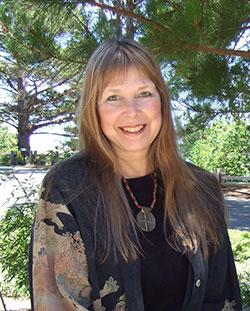
Professor of the Graduate School
Email: cnidaria@berkeley.edu
Phone:
Lab Webpage: https://ib.berkeley.edu/labs/koehl/
Research Description
I study the physics of how organisms interact with each other and their environments. My goal is to elucidate basic physical rules that can be applied to different kinds of organisms about how body structure affects mechanical function in nature. I combine techniques from fluid and solid mechanics with those from biology and ecology to do experiments in the field as well as in the laboratory.
We have been using this approach to address a variety of questions, including how microscopic creatures swim and capture food in turbulent water flow; how marine larvae recruit into benthic habitats; how being multi-cellular affects swimming, feeding, and predator avoidance in protozoan ancestors of animals; how morphology affects aerodynamic performance of extinct ancestors of flying insects and birds; how wave-battered marine organisms avoid being washed away; how hydrostatic organisms change shape and move through their habitats; and how suspension-feeding aquatic animals capture particles and how olfactory antennae catch odors from water moving around them.
Learn more about our research and publications by visiting our website: https://ib.berkeley.edu/labs/koehl
Selected Publications
Koehl, M.A.R. Koehl, M. A. R. (2024) A life outside. Annual Review of Marine Science 16: 17.1–17.23. doi/abs/10.1146/annurev-marine-032223-014227
Koehl, M. A. R. (2023) Of corpses, ghosts, and mirages: Biomechanical consequences of morphology depend on the environment. J. Exp. Biol. 226: jeb245442. doi:10.1242/jeb.245442
Nguyen, H., Ross, E., Cortez, R., Fauci, L., and Koehl, M. A. R. (2023). Effects of prey capture on the swimming and feeding performance of choanoflagellates. Flow 3: E22 doi:10.1017/flo.2023.16
Koehl, M. A. R. and T. L. Daniel (2022) Hydrodynamic interactions between macroalgae and their epibionts. Frontiers in Marine Science 9: 872960. doi.org/10.3389/fmars.2022.872960
Koehl, M. A. R., E. Perotti, D. Sischo, T. Hata, M.G. Hadfield (2022) Effects of currents, waves, and biofilms on motion and surface contacts of tubeworm larvae swimming above or below surfaces. Marine Ecology Progress Series 686: 107–126. doi.org/10.3354/meps14001.
Koehl, M. A. R. (2021) Selective factors in the evolution of multicellularity in choanoflagellates. J. Exp. Zool. Part B: Molec. Devel. Evolution 336: 315-326. doi: 10.1002/jez.b.22941